A day of work today, work and writing, and then off to wander Southwark in search of interesting sights, some din-din and finally { EPIDEMIC }, an experimental theatre work at Southwark Playhouse.
After doing a few hours of work, and a couple of writing, I decided to head out early for my show in Southwark. I move tomorrow, from tony Fitzrovia to the more frugal climbs of Bloomsbury/St. Pans. I decided to take a walk to Kings Cross station by way of the new flat, so I could get an idea of what awaits me. It was a nice stroll over into an area, Bloomsbury, with which I am already familiar, having stayed there for a while back in 2000. The sights are mostly the same, just the works are different.
From Kings Cross I took the eastern branch of the Northern line down to Bank so that I could walk across London Bridge to the South Bank at Southwark (say “suth-ark”). After snapping a few photos of the Monument to the Great Fire of London
I took the walk and was prepared to find a right mess on the south bank, as there was a major water mains break early this morning, which lead to 1.5 metres of water in Tooley Street, right outside the London Bridge tube station, and caused hundreds of businesses, hotels and offices (including City Hall) to shut down.
London is currently pox marked with works involving replacing the Victorian era water mains (should sound familiar to Milwaukeans), and a break like this (the second in 3 months) really brings home the need for it.
As expected, Tooley Street, just east of the station, was closed to vehicular traffic, but the various agency seemed to be doing a bang up job of sorting it all. There were fire brigades from all over, Whitechaple, Kentish Town, etc. as well as Plastic Cops, the PCSO support corps., water works lorries, etc. Quite a scene.
Had a walk around and then settled for a dinner of penne carbonara not far from the action.
Back out to stroll around some more, wandered along the southern side of the train trestles to take some photos of the ornate, but sullied masonry. Along the way encountered Pierre Garroudi, a slender French designer who has honed his skills in Manhattan (I’m guessing Pratt) and Milan before settling in London. He introduced me to his cat (who has lived in all of those places with him) and his designs.
Check out today’s gallery for all the photos. “Are you an architect?” he asked, when he saw me photographing the masonry. “No, just an admirer” I told him. We had a nice chat.
The area along the southern bank of the Thames here is called MoreLondon and includes a number of very modern structures in the shadow of Tower Bridge. It is quite vibrant, as most of the old docklands are, and tonight was no exception. A lot of public art, and a lot of people admiring it. I took more photos of that.
Finally it was time to go to the playhouse to see {EPIDEMIC}, the show I had come for. The story behind how I came to be here is this: A week ago, as X and I were traveling down to South Bank for a show, we encountered a vivacious group of young Thespians on the train. They were quite animated and one girl, maybe 21, was asked by a nearby lad if she was Indian (she obviously was). She was quite a striking beauty, and coyly looked at the young man and without skipping a beat said “No, I’m white, I just tan easily. My name is Emily.” as though that name was enough to establish her racial identity.

In modern England the question of whether someone is Indian is foolish, to say the least. Indian, as well as Bangladeshi, Pakistani, Afghanistan people have lived here for generations. So, to be Indian here is to say third or forth generation Indian, and with intermarriage (which happens more often than you’d think) it all becomes meaningless fairly quickly. This young woman had the dark ruddy skin and Arian features which I happen to find quite lovely, but I was not the one pestering her, so let’s leave that out of it.
I was more interested in the large hand made drum which the quietest and shyest member of the troupe was carrying, or rather trying to carry. After helping her get settled into a seat so that her drum didn’t obstruct traffic, I inquired what the story was with the drum. She answered, in a accent I would later discover was Greek, and halting English, that they were all with a theatre troupe, and the drum was a vital prop.
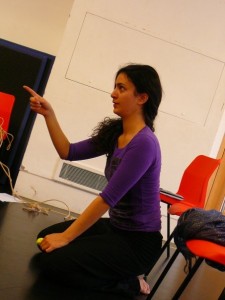
I asked what show, and she said it was an experimental production at the Southwark Playhouse based upon Antigone which would be produced for one night only, May 14th. I went online the next day and got a ticket for the whopping sum of £3.
Life is short, and when you have an opportunity to see some truly new and different perspectives in theatre, I say go for it. Enough of my theatre career was spent producing just that kind of show, so I can truly appreciate it when I have a chance to see it.
The venue was the bar of the playhouse, which itself is under the bridges of the railway interchange at London Bridge Station. In the darkened caverns of space is carved out a little antechamber to the main theatre, and this is where the production would take place. By the time I arrived, almost an hour before the show, the box office was already turning interested parties away as they had a sellout show. Eventually the eager audience prevailed upon the box office workers to sell them SRO spots, so at the start of the show the place was packed. I had three people sitting on my feet for most of the performance.
While the audience milled about and got their drinks and seats sorted the cast started to coalesce in the centre of the bar room, performing stretching and limbering exercises (made my back hurt just watching).
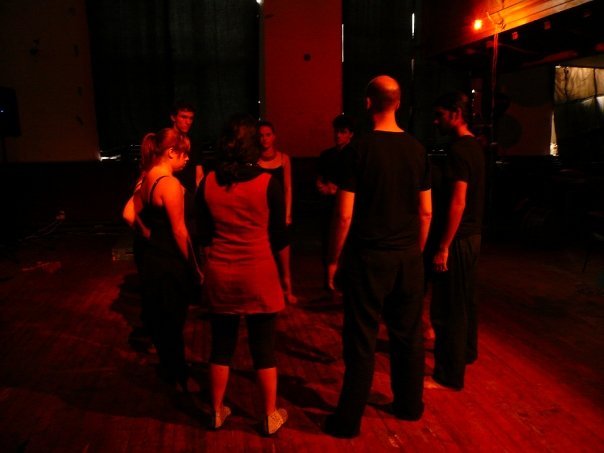
Then, when the audience was all watered, the actors gelled into a cohesive mass and started the show.
There is nothing grand or unheard of to report about the show. It is an old tale, Antigone, but this was a vital and inventive telling. Props were spare, mostly just a large piece of orange-red fabric and a couple of puppets. Most of the creative work went into the movements of the cast and the turns on the traditional story. Our “Emily” from the tube, Natalie Naomi Bamunuwatte, was stellar as Antigone, Luke Harris shines as Creon and Konstantinos Kavakiotis triumphs as Haemon. Ioli Adreadi, the shy woman with the drum, played director cum ring-master to the cast of eight, and crafted a piece seemingly purpose built for the space.
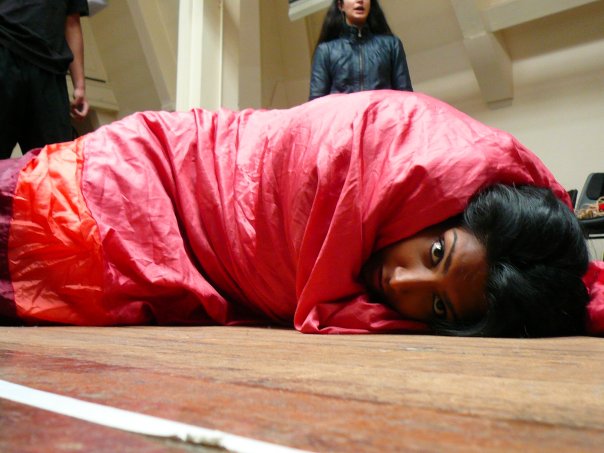
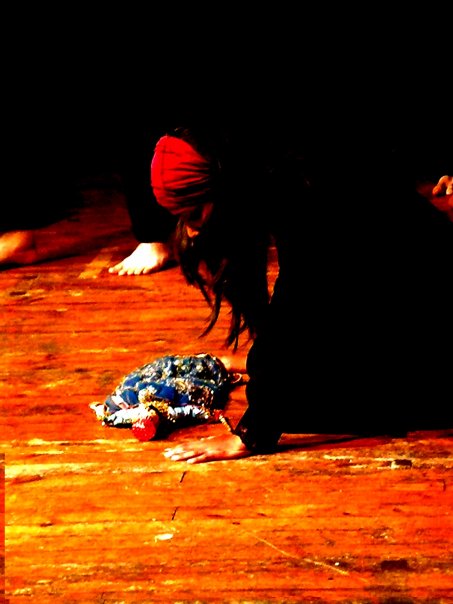
That’s the trick, it wasn’t. {EPIDEMIC} are all about constant change within the company of actors and the spaces they inhabit. The cast of tonight’s one-off performance consisted of 4 veterans and 4 newcomers. They will perform, as well, in Athens. They previously performed, with different cast, at Edinburgh and the Royal Academy of Dramatic Arts, both in 2008.

I felt honoured to have been amongst the 100 or so people to get to see them this time out.


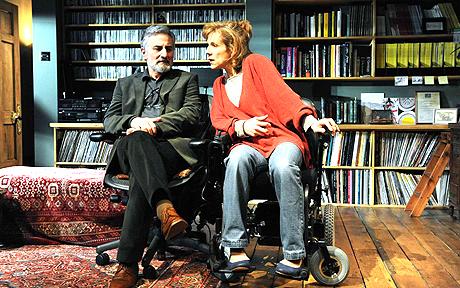
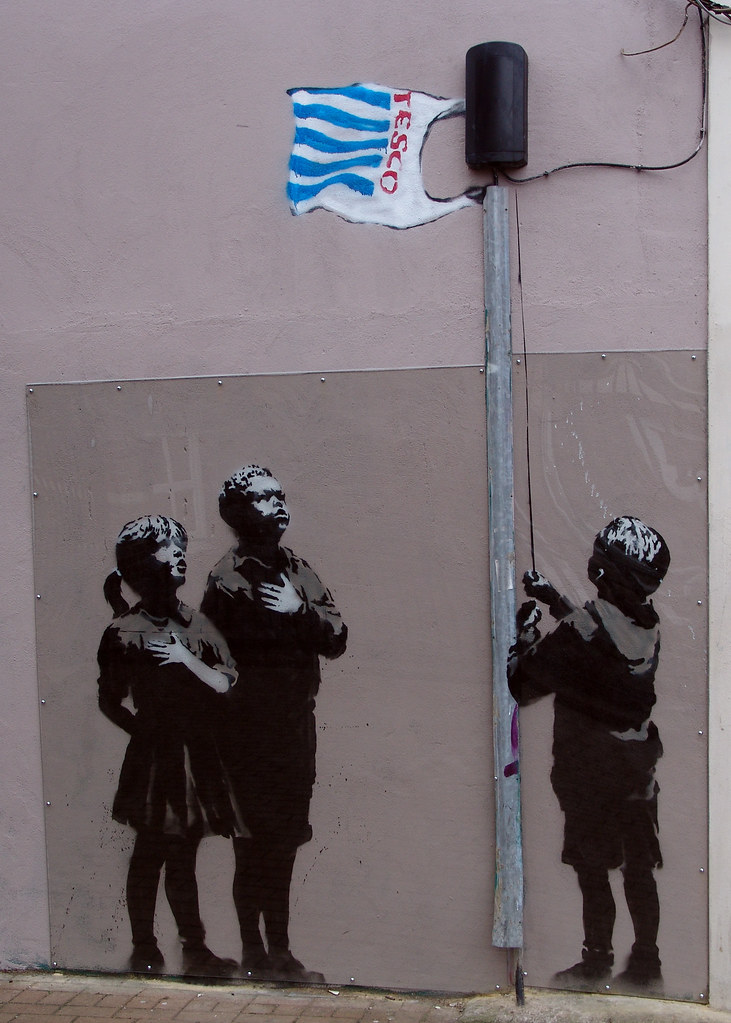


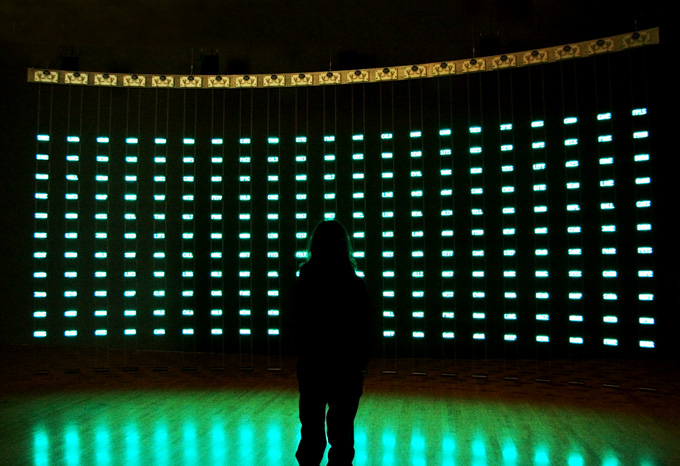


 A large installation piece in which hundreds of knit gloves, with coloured pencils inserted where the finger tips would be, are arranged on the wall to make the image of a face. The gloves bulge out, all stuffed, making their sharpened coloured-pencil fingernails seem quite vicious and threatening.
A large installation piece in which hundreds of knit gloves, with coloured pencils inserted where the finger tips would be, are arranged on the wall to make the image of a face. The gloves bulge out, all stuffed, making their sharpened coloured-pencil fingernails seem quite vicious and threatening.